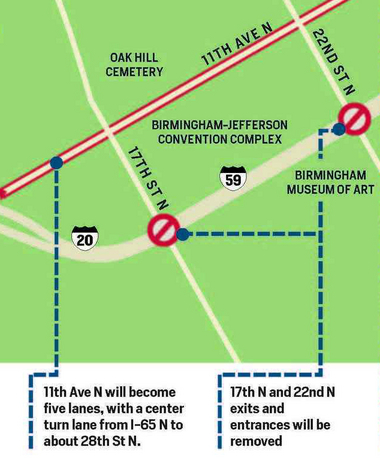The “Short Route” runs slightly south of the existing Finley Corridor thus avoiding the need to demolish businesses along it. This plan would re-route I-59/20 from Tallapoosa Street northwest along the Finley Corridor, connecting to I-65 with redesigned interchange, then continuing along I-65 to the existing I-59/20 and I-65 interchange – a total distance of 2.5 miles. While the distance may seem short on paper, it has numerous problems.
One challenge was the requirement that ALDOT widen a 1.3 mile stretch of I-65 from the new interchange to the existing route interchange between I-59/20 and I-65 in order to accommodate all interstate traffic passing through Birmingham. Calculations indicated that this portion of I-65 would, at a minimum, need to double from four lanes to eight, in both directions. This lane expansion would require ALDOT to acquire and demolish large amounts of property in minority and low-income neighborhoods, including Enon Ridge and Fountain Heights.
Another unique challenge is the path of the entire re-route would run directly through the Village Creek floodplain, portions of which contain hazardous materials and historical sites. These conditions would have required ALDOT to construct an elevated 16-lane interstate through the middle of minority and low-income neighborhoods, at a total cost ranging in excess of $1.5 billion. Even if this were feasible, it would have required more than 20 years to complete.

